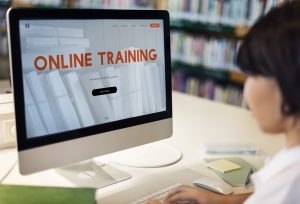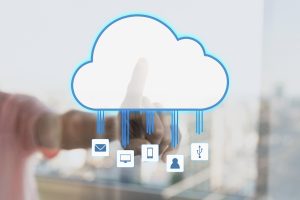The rapid evolution of technology has revolutionized education, particularly in IT training. Today, modern classrooms demand a blend of innovative teaching tools and strategies to prepare students for an ever-changing tech landscape. As IT educators, staying ahead of the curve means embracing tools such as Learning Management System (LMS) integrations, virtual labs, and interactive content. These resources not only enhance teaching efficiency but also create an engaging and effective learning environment.
The Modern Classroom: An Overview
Gone are the days of chalkboards and static lectures. Today’s IT classrooms thrive on interactivity, collaboration, and technology integration. Modern classrooms are dynamic spaces where educators use advanced tools to personalize learning, bridge skill gaps, and foster collaboration. The key lies in leveraging tools that streamline the teaching process while offering students hands-on, immersive learning experiences.
1. Leveraging Learning Management Systems (LMS) for Efficiency
Learning Management Systems (LMS) have become the backbone of modern education. They allow educators to manage courses, track student progress, and deliver resources seamlessly. For IT educators, LMS platforms offer a myriad of possibilities:
Key Features of LMS for IT Educators
- Centralized Resource Management: Upload course materials, assignments, and tutorials for easy student access.
- Real-Time Progress Tracking: Monitor individual and group performance to identify areas where additional support is needed.
- Customizable Content Delivery: Create modular courses tailored to diverse learning needs and paces.
Examples of Effective LMS Integration
- Automated Assessments: IT educators can use quizzes and coding challenges that provide instant feedback, saving time on manual evaluations.
- Discussion Boards: Encourage peer learning and problem-solving through collaborative forums.
- Gamified Learning Paths: Engage students by incorporating badges, leaderboards, and milestones into the curriculum.
By leveraging LMS platforms, IT educators can streamline their workflow while focusing more on guiding students through complex technical concepts.
2. Virtual Labs: Bridging the Gap Between Theory and Practice
Practical experience is crucial in IT education. However, setting up and maintaining physical labs can be costly and time-consuming. Virtual labs offer a cost-effective, scalable solution. These labs allow students to work on real-world scenarios and applications without requiring expensive hardware or dedicated facilities.
Benefits of Virtual Labs
- Safe Experimentation: Students can practice coding, network configuration, and troubleshooting in a controlled, risk-free environment.
- Remote Accessibility: Virtual labs can be accessed from anywhere, making learning inclusive and flexible.
- Real-World Simulations: Replicate complex IT scenarios like cybersecurity breaches or cloud deployment for hands-on learning.
Practical Use Cases for Virtual Labs
- Cybersecurity Training: Students can practice responding to simulated attacks, enhancing their understanding of threat mitigation.
- Software Development: Virtual environments allow learners to code, debug, and deploy applications without the need for physical servers.
- Networking Labs: Configure routers, switches, and firewalls in a virtual setting to gain practical networking skills.
Virtual labs are an indispensable tool for IT educators, ensuring students gain the hands-on experience they need to excel in the field.
3. Interactive Content: Engaging Students Effectively
The attention span of learners today demands more than static PDFs or lengthy lectures. Interactive content, such as videos, quizzes, and interactive tutorials, can significantly enhance student engagement.
Types of Interactive Content for IT Classrooms
- Interactive Videos: Videos with embedded quizzes and clickable elements can turn passive viewing into active participation.
- Code-Along Tutorials: Platforms that allow students to write, test, and debug code in real-time foster a deeper understanding of programming concepts.
- Simulations and Animations: Visualizing complex IT concepts, such as data flow or algorithm operations, can make abstract topics more tangible.
Strategies to Incorporate Interactive Content
- Blended Learning: Combine traditional lectures with digital resources to cater to diverse learning preferences.
- Personalized Pathways: Offer customized learning tracks based on individual skill levels and career goals.
- Collaborative Projects: Use tools like shared coding platforms or cloud-based project management systems to encourage teamwork.
Interactive content transforms the learning experience, making it more engaging and memorable for students while easing the teaching process for educators.

4. Strategies for Effective IT Teaching
Beyond tools, the success of IT education also depends on the strategies employed by educators. Here are some actionable approaches:
Adopt a Student-Centric Approach
- Focus on active learning by encouraging students to solve real-world problems.
- Use formative assessments to provide regular feedback, helping students stay on track.
Integrate Industry-Relevant Projects
- Collaborate with industry partners to design projects that mimic real-world challenges.
- Encourage students to work on certifications or internships that align with their coursework.
Foster a Growth Mindset
- Highlight the iterative nature of IT, where failures are opportunities to learn.
- Create an inclusive environment that celebrates curiosity and creativity.
Promote Lifelong Learning
- Teach students how to stay updated with industry trends, tools, and technologies.
- Offer resources for self-paced learning, such as online courses or tech blogs.
5. Challenges and How to Overcome Them
While these tools and strategies are transformative, educators often face challenges in their implementation. Here’s how to address some common hurdles:
Lack of Technical Expertise
- Solution: Provide regular training sessions for educators to become proficient with LMS, virtual labs, and other tools.
Resource Constraints
- Solution: Opt for scalable, cloud-based solutions that reduce costs and hardware requirements.
Student Engagement Issues
- Solution: Use analytics from LMS and virtual labs to identify disengaged learners and tailor interventions accordingly.
Keeping Up with Rapid Technological Changes
- Solution: Establish professional learning communities (PLCs) for educators to share knowledge and best practices.
6. Looking Ahead: The Future of IT Education
As technology continues to evolve, so will the tools and strategies available for IT education. Artificial intelligence (AI) and machine learning are poised to play a significant role in personalizing learning experiences further. Adaptive learning platforms powered by AI can analyse student performance in real time and suggest tailored resources or interventions.
Emerging Trends to Watch
- XR in Education: Extended Reality (XR) technologies, such as augmented and virtual reality, are creating immersive learning experiences.
- Blockchain for Credentialing: Secure, verifiable certificates and digital credentials are transforming how achievements are recognized.
- EdTech Startups: Innovative startups are developing niche solutions to bridge gaps in traditional education models.
Conclusion
Empowering IT educators with modern tools and strategies is not just about adopting the latest technology—it’s about creating a learning environment that equips students for real-world challenges. LMS integration, virtual labs, and interactive content are powerful enablers of effective teaching, offering flexibility, scalability, and engagement.
By embracing these resources and aligning teaching strategies with the needs of today’s learners, educators can not only enhance the learning experience but also inspire the next generation of IT professionals. As we continue to navigate the complexities of the digital age, the role of IT educators in shaping competent, innovative, and adaptive professionals has never been more critical.






